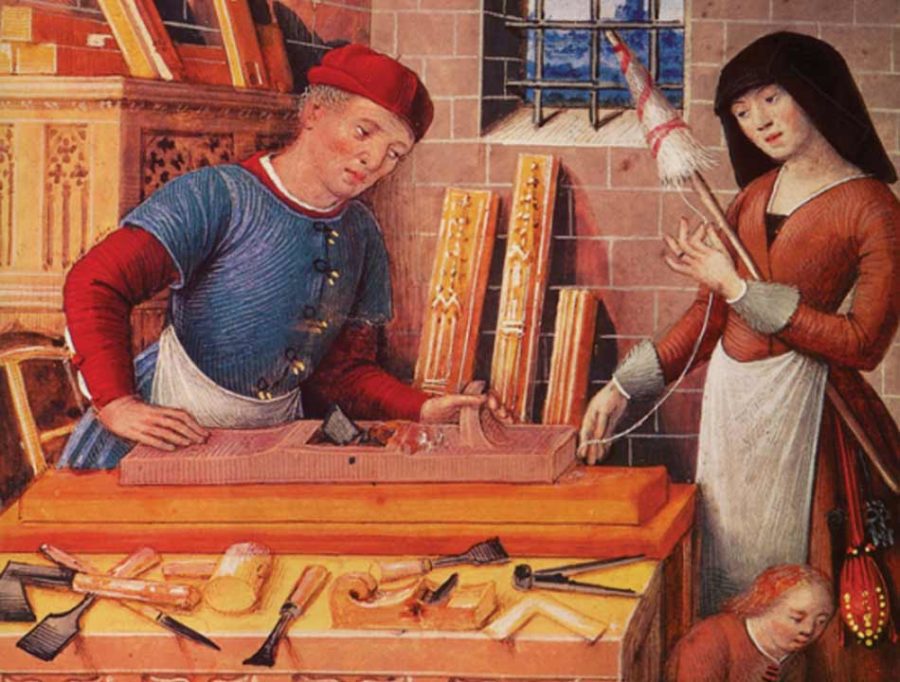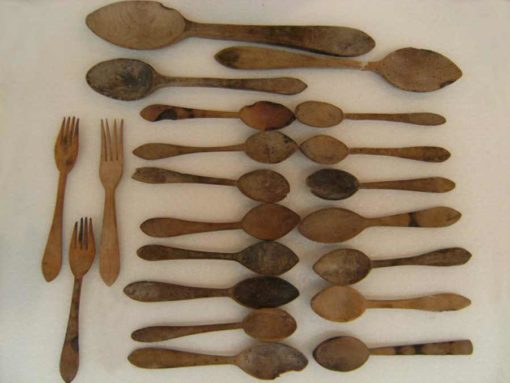
Old Crafts in Búger
Today we are going to talk about two old crafts in Búger, already extinct in Mallorca, because almost everything is now produced in large factories and not by hand.
Many jobs are currently linked to new technologies: computers, telephony, digital systems… And in general, in this 21st century society, the service sector is increasingly predominant.
But in other times, agriculture and artisan production were what really mattered. People had skills to meet their daily needs, from day to day, and they were engaged in it.
The ancient craft of CUCHARERO
Yeah, hard to believe, but spooning (cucharero) was once a craft. Because spoons and forks were made by hand and out of wood.
The village that stood out in Mallorca in this activity is a very small one, Búger, of barely 1000 inhabitants and that in its good times had up to 15 “Master Spooners” (Mestres cullerers) in activity.
Several types of wood were used, but mainly pine and orange. It took about an hour to make a piece, although they couldn’t do everything right away.
To get a spoon it was necessary to start with green wood, as it was easier to work with. Then they had to let it dry and then they could make the hole and shape of the spoon. In addition to others, a fundamental tool for making spoons was the xapeta, which served to empty the wood. It was of different sizes depending on whether one wanted to take out a spoon, a teaspoon or a ladle.
For the forks the main tool was the xorrac, which served to make their characteristic spikes. which served to make their characteristic spikes. Both spoons and forks were finished off with files and sandpaper for a smoother finish.
The ancient craft of PICAROLER
This word in Mallorcan means the craftsman who made the picarols (cowbells) for the animals, mainly sheep and goats, but also for the cows.
The village of Búger also excelled in this craft, although today it is also practically extinct. The work was not very difficult, but it was very laborious, and each teacher had his secrets which he jealously guarded.

To make a picarol , first an iron plate was marked, using templates of different sizes as desired. Then it was cut, its shape was molded, holes were made to hang it, and the batai (clapper) was made and placed. The batai was the hardest thing to do, because if it was not well done it did not sound good.
But what was fundamental was the cagaferro, which was a special mud made of earth and sea vegetables collected from the beach. The picarol was covered with this mud when it was put in the oven to give it the finish. It was very important so that when it got red-hot, the metal wouldn’t break or crack. This was the great secret of every master, the formula of the cagaferro.
The final result, the cowbell, had different sizes, and also different names, according to their uses: esquella (cows), picarol gros, quatre sous (sheep), quinze doblers, and the smallest of all the picarol petit …

Life has changed a lot since these ancient crafts were so necessary. Nowadays everything is industrialized and all these products have become much cheaper, making these craftsmen finally disappear on our island.
If you liked this article on the old crafts in Búger, you will love the article on construction with marés, which has defined the type of construction in the Balearic Islands. Follow the link to see the article: Building with mares
